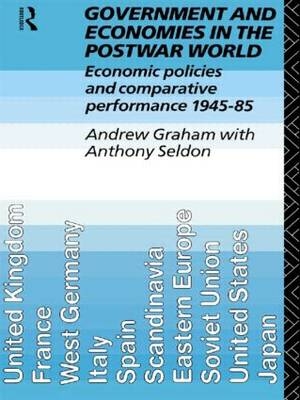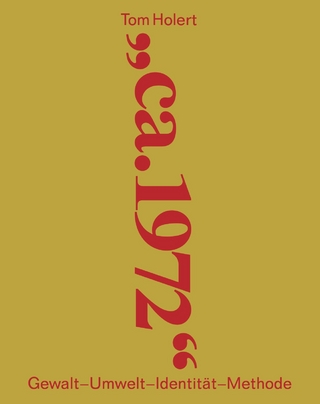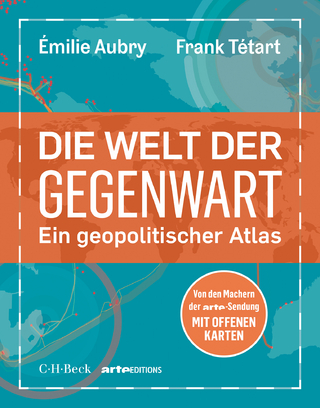
Government and Economies in the Postwar World
Economic Policies and Comparative Performance, 1945-85
Seiten
1991
Routledge (Verlag)
978-0-415-07288-5 (ISBN)
Routledge (Verlag)
978-0-415-07288-5 (ISBN)
Beginning with an overview of the system of international trade and payments since the war, this book includes studies of all the major industrialized nations and addresses key themes from a comparative perspective.
The chance to begin anew seldom occurs. Yet the nearly complete breakdown of the world economy between 1939 and 1945, together with the dominant position of the United States at the end of the war, provided just this opportunity. A new international economic order was built on the ruins of the old. How this happened - and the role of government in economic performance - is the subject of this important and timely book. Written by political scientists, contemporary historians and economists, it includes ten country studies covering all the major industrialized nations in the West: the USA, USSR, Japan, Germany, the United Kingdom, France, Italy, Spain, Eastern Europe, and Scandinavia. In each chapter readers will find information on the main objectives and instruments of economic policy, the institutional framework, where the country started from at the end of the war, and a summary of what happened thereafter both in terms of policies and outcomes. Each chapter also contains data on the country's economic performance, a list of selected dates of important events, and a guide to further reading. The book begins with an overview of the sytem of international trade and payments since the war, and ends with five commentaries drawing attention to contrasts and similarities between the nations. The commentaries feature David Henderson, Head of the Economics Division of the OECD, on the overall economic performance, Charles Feinstein on the influence of different starting points, David Marquand on the effect of different political and institutional structures, and Sidney Pollard on economic policies and traditions. Learning from other countries' experience as well as understanding how they see their own problems is increasingly important with 1992, glasnost', and the problem of international policy coordination between the USA, Japan, and Germany so high on the agenda. No other book provides such a wide-ranging account of how the industrialized world came to be where it is today.
The chance to begin anew seldom occurs. Yet the nearly complete breakdown of the world economy between 1939 and 1945, together with the dominant position of the United States at the end of the war, provided just this opportunity. A new international economic order was built on the ruins of the old. How this happened - and the role of government in economic performance - is the subject of this important and timely book. Written by political scientists, contemporary historians and economists, it includes ten country studies covering all the major industrialized nations in the West: the USA, USSR, Japan, Germany, the United Kingdom, France, Italy, Spain, Eastern Europe, and Scandinavia. In each chapter readers will find information on the main objectives and instruments of economic policy, the institutional framework, where the country started from at the end of the war, and a summary of what happened thereafter both in terms of policies and outcomes. Each chapter also contains data on the country's economic performance, a list of selected dates of important events, and a guide to further reading. The book begins with an overview of the sytem of international trade and payments since the war, and ends with five commentaries drawing attention to contrasts and similarities between the nations. The commentaries feature David Henderson, Head of the Economics Division of the OECD, on the overall economic performance, Charles Feinstein on the influence of different starting points, David Marquand on the effect of different political and institutional structures, and Sidney Pollard on economic policies and traditions. Learning from other countries' experience as well as understanding how they see their own problems is increasingly important with 1992, glasnost', and the problem of international policy coordination between the USA, Japan, and Germany so high on the agenda. No other book provides such a wide-ranging account of how the industrialized world came to be where it is today.
Graham, Andrew
1 Introduction Part I 2 The international environment 3 The United Kingdom 4 France 5 West Germany 6 Italy 7 Spain 8 Scandinavia 9 Eastern Europe Part one: The group as a whole Part two: The case of Czechoslovakia 10 The Soviet Union 11 The United States 12 Japan Part II 13 Comparative economic performance of the OECD countries, 1950–87: a summary of the evidence 14 Benefits of backwardness and costs of continuity 15 Economic policies and traditions 16 The meaning of hard work 17 Political institutions and economic performance
| Erscheint lt. Verlag | 5.12.1991 |
|---|---|
| Verlagsort | London |
| Sprache | englisch |
| Maße | 156 x 234 mm |
| Gewicht | 544 g |
| Themenwelt | Geschichte ► Allgemeine Geschichte ► Zeitgeschichte |
| Sozialwissenschaften ► Politik / Verwaltung ► Staat / Verwaltung | |
| Wirtschaft ► Betriebswirtschaft / Management ► Rechnungswesen / Bilanzen | |
| Wirtschaft ► Volkswirtschaftslehre ► Makroökonomie | |
| Wirtschaft ► Volkswirtschaftslehre ► Mikroökonomie | |
| ISBN-10 | 0-415-07288-3 / 0415072883 |
| ISBN-13 | 978-0-415-07288-5 / 9780415072885 |
| Zustand | Neuware |
| Informationen gemäß Produktsicherheitsverordnung (GPSR) | |
| Haben Sie eine Frage zum Produkt? |
Mehr entdecken
aus dem Bereich
aus dem Bereich
Gewalt, Umwelt, Identität, Methode
Buch | Softcover (2024)
Spector Books OHG (Verlag)
36,00 €


